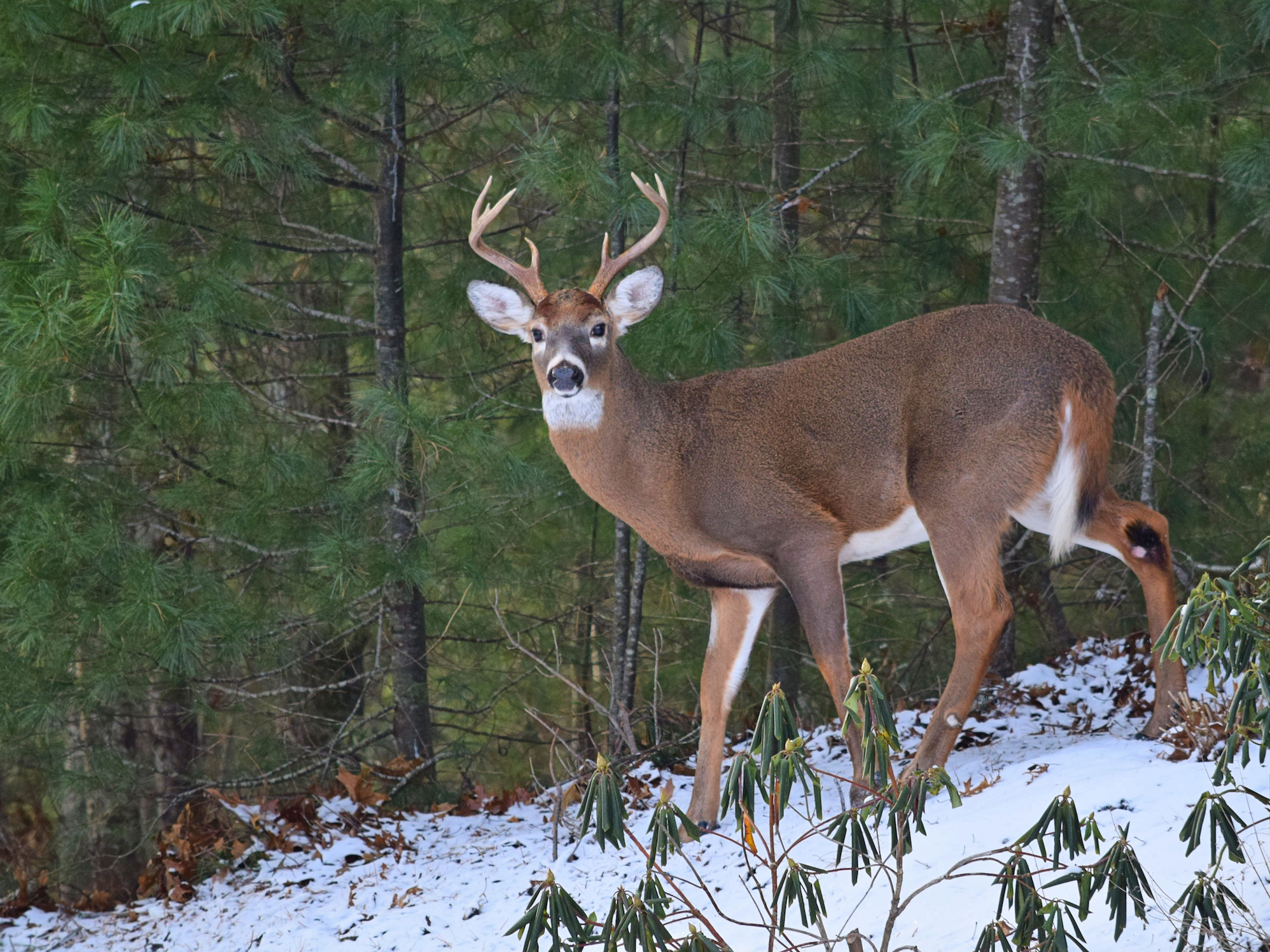- The Centers for Disease Control and Prevention has confirmed cases of chronic wasting disease, also known as “zombie deer disease,” in 24 states and two Canadian provinces.
- Now, Nevada health officials are fighting to stop the spread of CWD into a 25th state.
- Deer, elk, and reindeer are all at risk of this deadly condition – a type of rare, progressive neurodegenerative disorder called a prion disease. (Mad cow disease is another example.)
- Animals infected with zombie deer disease rapidly lose weight, stumble around listlessly, and get confused as their brains and nervous systems shut down. CWD is fatal and has no cure.
- Although no deer-to-human transmission has been reported yet, experts are concerned that it could happen. The CDC is telling people not to eat animals that might be infected.
- Visit Business Insider’s homepage for more stories.
As of August 2019, chronic wasting disease, also known as “zombie deer disease,” had officially spread to 24 US states.
Now, wildlife officials in Nevada are fighting to keep the disease out of the state. Earlier this year, Nevada legislators passed a law to keep parts of certain carcasses out of the state in an attempt to stop the spread of CWD.
Officials are testing dead animals and monitoring migratory elk and deer at the state line with Utah for signs of the sickness, Peregrine Wolff, a Nevada Department of Wildlife veterinarian, recently told AP.
The neurodegenerative disease affects hoofed animals such as elk, reindeer, moose, and various deer species. It wreaks havoc on the creatures’ brains and nervous systems: Infected animals’ bodies waste away as they lose weight at a rapid pace, and they eventually begin to stumble around confused, drooling and listless, like something undead – hence the zombie moniker.
So far, most cases have been documented in the Rockies, the Midwest, and the eastern US. According to the Centers for Disease Control and Prevention, infection rates among a given population can be anywhere from 10% to 25%.
"It's a disease that you can't get rid of," Dale Garner, wildlife chief for the Iowa Division of Natural Resources, told CBS Chicago. "There's no cure so far. So as long as you have deer on the landscape, and it continues to spread from animal to animal, you'll probably have more."
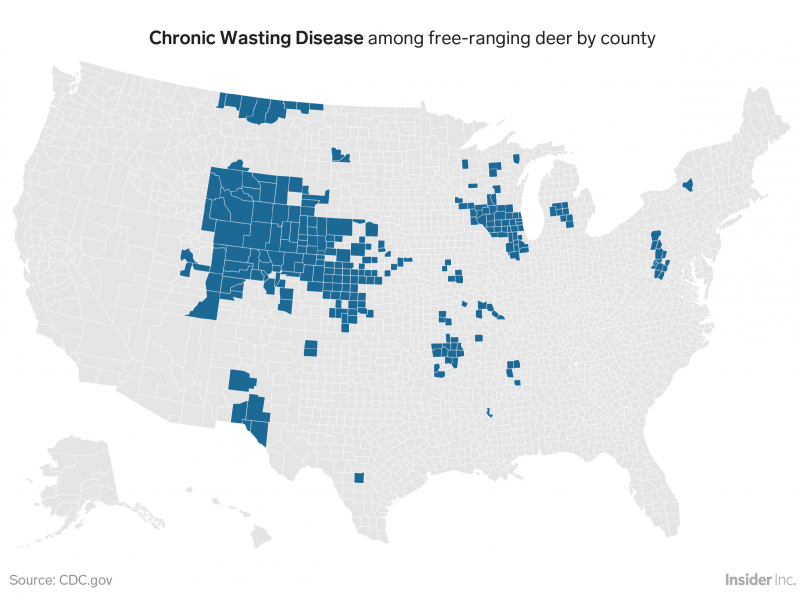
In the last 15 years, CWD has spread from being in just two states to at least 24 today. Some people around the country have posted YouTube videos of animals behaving in strange ways, most likely because of CWD symptoms. In addition to the reported cases in the US, instances of the disease have been reported in Canada, Norway, Finland, and South Korea.
Scientists think CWD spreads from animal to animal via contaminated body fluids or through indirect exposure to contaminated carcasses or drinking water. The disease can impact both wild and farmed deer and elk, but not cattle.
'It's not a matter of if, it's a matter of when'
CWD is a type of neurological ailment called a prion disease, and is always fatal. Prions are curly proteins that have folded incorrectly, and they cause damage to the brain and spinal cord. Nevada has banned the transport of animal brains and spinal cords, two areas of the body that contain large concentrations of prions, into the state in an attempt to curb the spread of CWD.
Another example of a prion disease is mad cow disease, officially called bovine spongiform encephalopathy, which causes progressive neurological degeneration in animals and humans. Creutzfeldt-Jakob disease is in the same category - 70% of individuals who get the illness die within a year, according to the National Institute of Neurological Disorders and Health.
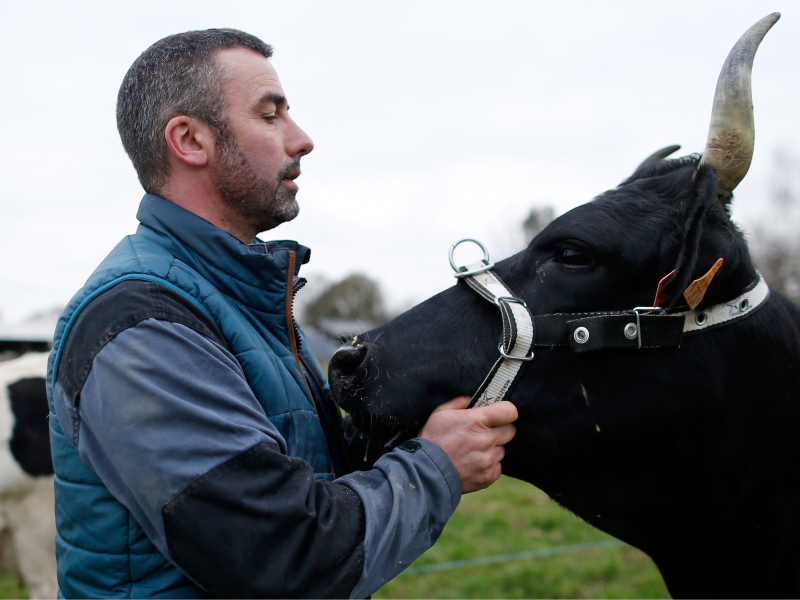
Prion diseases often have long incubation periods (CWD has an average incubation period of 2 to 4 years), meaning animals infected with CWD might not show signs of the disease for at least a year after exposure. Some studies show that infected animals are contagious before symptoms start, AP reported.
CWD's long incubation period and virality make it difficult to monitor and contain, wildlife officials said.
"It's not a matter of if, it's a matter of when," Wolff added of CWD's spread into Nevada. "We know that we can't wrap Nevada in a bubble."
Could 'zombie deer disease' spread to humans?
Zombie deer disease hasn't spread to humans, but the CDC predicts that if it were to jump to people, that would most likely happen through the consumption of infected deer meat.
"We don't know if there ever will be transmission to humans, but surely there could be," Michael Osterholm, director of the Center for Infectious Disease Research and Policy at the University of Minnesota, told Business Insider.
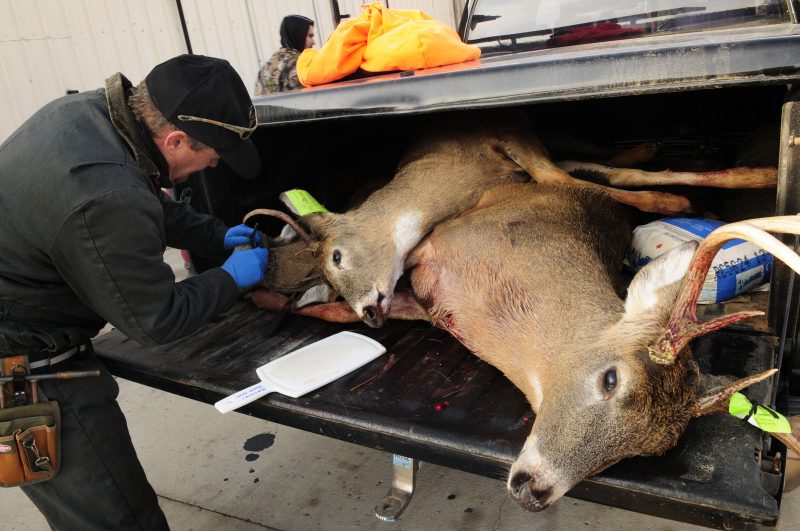
The biggest risk is that the disease could evolve in a way that enables it to infect people. That's what happened with mad cow disease in the UK during the 1980s and 1990s. The illness first infected cattle before eventually making its way into the human food supply. It caused a new type of Creutzfeldt-Jakob disease in humans that leads to rapid brain deterioration and death.
Osterholm testified in front of Minnesota lawmakers about this risk earlier this month. He said the Alliance for Public Wildlife estimates that people are already consuming 7,000 to 15,000 CWD-infected animals annually.
"It is probable that human cases of CWD associated with the consumption of CWD-contaminated meat will be documented in the years ahead," he said.
Mark Zabel, an immunologist at Colorado State University, told Colorado Public Radio that he believes "it's only a matter of time" before a type of CWD emerges that could infect a human.
'It is possible that the number of human cases will be substantial'
Osterholm said in his testimony that consumption of CWD-infected meat is expected to increase by up to 20% each year.
"We're concerned not just about people eating infected venison, but also the potential cross-contamination of the meat processing system," he said.
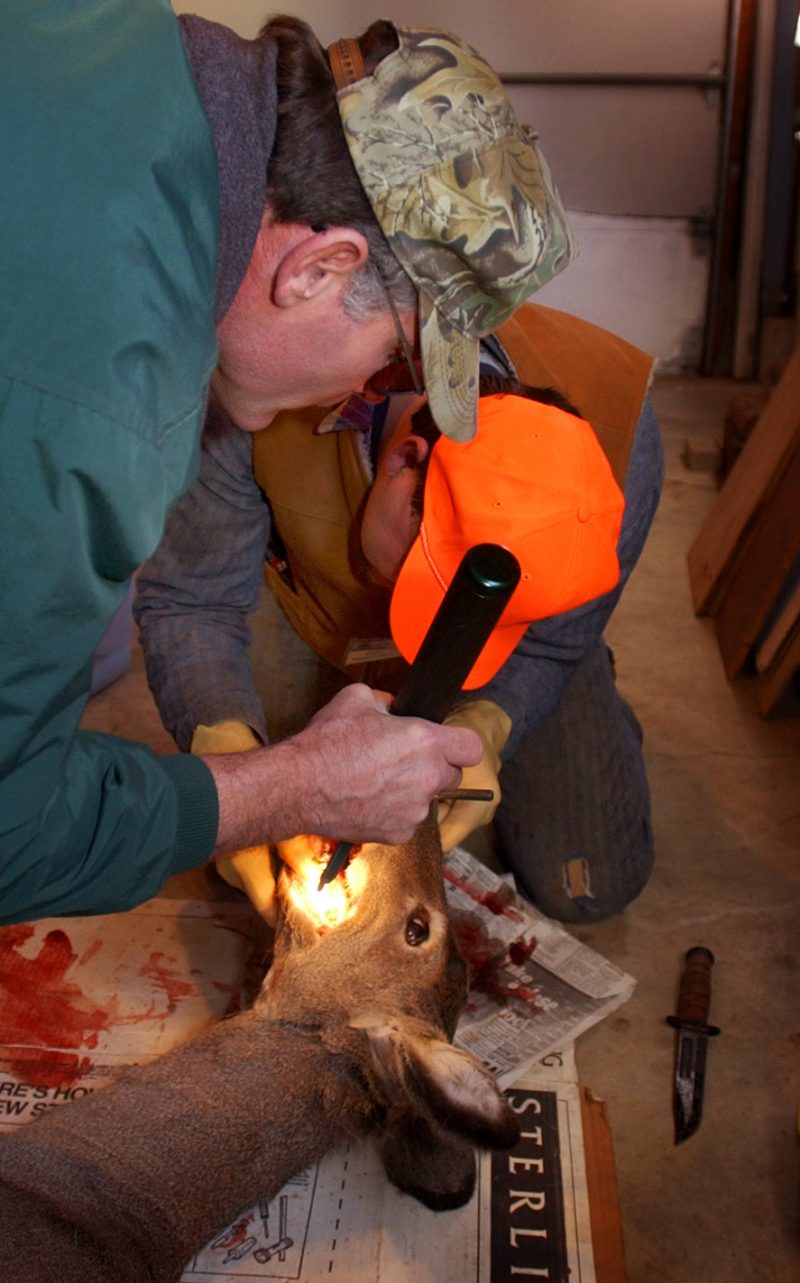
For now, the CDC, Health Canada, and state health officials are telling people not to consume any meat from animals that could be infected with CWD.
"You could be eating infected deer without even knowing it," Osterholm said.
He doesn't want hunters to stop hunting deer because hunting keeps their populations from skyrocketing. Instead, the best way for hunters to determine whether an animal is infected is to get the meat tested before eating it, according to the CDC. Osterholm hopes those tests will soon be made more user-friendly - right now, sending meat in for testing sometimes takes days.
During his testimony, Osterholm also said that based on his studies of mad cow disease, "it is possible that the number of human cases will be substantial and will not be isolated events."
That's especially worrisome because Osterholm thinks the incubation period for CWD in humans could be as long as 10 years. So transmissions could be happening for a long time before health experts realize it.
"The bottom line is this is unfortunately being ignored as potential major public health problem," he said. "We have to take action now for cases that will be happening 10 years from now."

